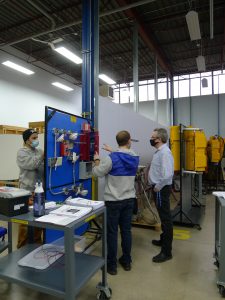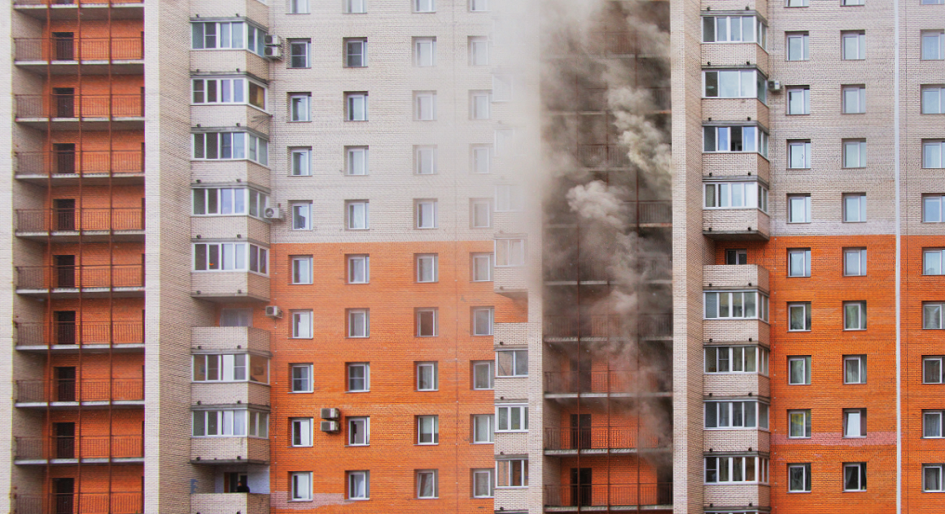Avoidable disasters and regulatory changes have underscored the need for stronger fire prevention measures in recent years. And for building owners and property managers, this means applying extra due diligence when adopting the fire safety systems, training, and certified professionals to keep occupants safe.
It’s a risk that can hit close to home. In February 2020, for example, an eighth-floor fire at a Toronto apartment led to the tragic death of a tenant, the hospitalization of six occupants, and the destruction of 29 units. Upon investigation, The Office of the Fire Marshal (OFM) concluded that the initial smoke alarm had been dismissed as fake and – despite best intentions – occupants did not follow the correct evacuation process.
“This tragic fire reinforces the need for those who live in high-rises, and other occupancies where tenants live, to learn what to do if a fire occurs in your building,” said Jon Pegg, Ontario Fire Marshal, in a follow-up statement to press. “[It’s important to] learn about the fire safety features in your building and the emergency procedures outlined in the building’s fire safety plan.”
Yet, while awareness and training are crucial to fire safety, they are not the complete solution. In fact, had the above-mentioned alarm not triggered the apartment’s monitoring system, the story could have been much worse. As such, this incident demonstrates how critical it is to combine fire response training with fire safety systems that are correctly installed, tested, and maintained.
“Both sides of the fire equation put their life on that fire alarm system,” says Essa Fire Chief and president of the Ontario Association of Fire Chiefs, Cynthia Ross Tustin. “The people in the building rely on it for themselves and their children to be notified to get out of the building, and the fire department relies on the quality of that fire alarm system – that it’s installed and maintained properly.”
“For us, it’s easier to fight a fire in a building that’s empty,” she adds. “We want to arrive when everyone’s been notified and waiting on the lawn for us.”
Certified support
 Ontario’s building owners and property managers are not alone in managing crucial fire safety responsibilities. Today, they have access to certified fire safety system installation and maintenance professionals who can help ensure systems will perform to expectation and that buildings (and their teams) are meeting the most up-to-date Fire Code regulations.
Ontario’s building owners and property managers are not alone in managing crucial fire safety responsibilities. Today, they have access to certified fire safety system installation and maintenance professionals who can help ensure systems will perform to expectation and that buildings (and their teams) are meeting the most up-to-date Fire Code regulations.
“That’s where our Certi-Fire program comes in,” says Cathy Frederickson, a spokesperson with Electrical Contractors Association of Ontario (ECAO). “The fire alarm and protection industry is continually changing, and one of the key changes has been in legislation regarding the installation and testing of fire alarm systems. It is important to keep up with technology by undergoing comprehensive training with new skills and standards. Hence, we are proud of our certified fire alarm electricians, and to provide them with the professional training and certification approved by the OFM to meet the requirements and resolve all types of fire alarm concerns.”
The Certi-Fire Program has evolved over 20 years to meet the requirements of the Ontario Fire Code O. Reg. 213/07. It is also one of only two fire system certification courses of its kind recognized by the Ontario Fire Marshal. Through the four-level program, 309A licensed electricians undergo 160 hours of intense academic and hands-on training covering all facets of fire system installation, testing, verification, and maintenance, as well as Fire Code regulations. Recertification (Level 5) is mandatory every five years to stay current with changes of the code and standard.
“Typical life safety systems — your smoke detectors to your carbon monoxide detectors – that’s all you see. But how it was installed, and how it was wired behind the walls, is what makes the system function and keep you safe,” says Dave Kester, Certi-Fire electrician with ProWave Electric, adding, “Certi-Fire ensures not only that your [building’s] life safety outside of your walls is in good working order, but ensures the installation itself is good.”
“Fire alarm systems are complicated and different from typical electric work,” adds Mark Llyod, T. Lloyd Electric, an ECAO Registered Fire Alarm Contractor. “Participating Certi-Fire ensures our clients have a fully functional, code-compliant system.”
With required re-certification every five years, the intent of ECAO’s Cert-Fire program is to produce electricians who can not only provide a full breadth of electrical services but tackle a building’s full fire safety needs. And to date, the program has certified nearly 2450 professionals to do just that.
It takes a team
Fire safety is as much about systems as it is people. It’s programs like ECAO’s Certi-Fire and the Association’s additional building owners and property managers awareness training initiatives that are working to unite all building stakeholders in turning down the heat.
“Certi-Fire training is critical,” insists Monte McNaughton, Ontario Minister of Labour, Training and Skills Development. “It’s very important that we protect families, people, and businesses right across the province. It’s all about that consumer protection, and this training is essential to that goal.”
Certi-Fire is supported by the Joint Electrical Promotion Plan (JEPP), which is managed and funded by the Electrical Contractors Association of Ontario (ECAO) together with the International Brotherhood of Electrical Workers Construction Council of Ontario (IBEW CCO). Learn more about ECAO’s Certi-Fire program at www.certifire.org and find more building owner/manager fire safety training initiatives at https://www.ecao.org/all-your-fire-alarm-needs.









